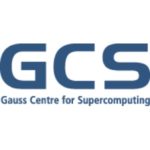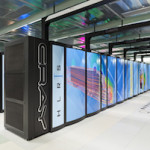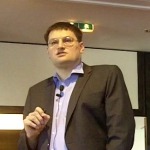“This cosmic simulation was made possible by the Hazel Hen supercomputer in Stuttgart, where 16,000 cores worked together for more than a year – the longest and most resource-intensive simulation to date. The simulation itself consists of a cube of space measuring more than 230 million light-years in diameter that contains more than 20 billion particles representing dark matter, stars, cosmic gas, magnetic fields, and supermassive black holes (SMBHs).”
GCS in Germany Allocates More Than 1 Billion Core Hours to Research Projects
GCS in Germany has approved the allocation of 1.171 billion core hours of computing time to 13 outstanding national research projects. The researchers awarded computing time allocations on the German Tier 0/1 supercomputing systems Hazel Hen at HLRS, JUWELS at the Jülich Supercomputing Centre, and SuperMUC-NG at LRZ for a period of 12 months.
Gauss Centre in Germany Allocates 1 Billion Computing Core Hours for Science
“With the 19th Call for Large-Scale Projects, the GCS steering committee granted a total of more than 1 billion core hours to 17 ambitious research projects. The research teams represent a wide range of scientific disciplines, including astrophysics, atomic and nuclear physics, biology, condensed matter physics, elementary particle physics, meteorology, and scientific engineering, among others.”
Hazel Hen Supercomputer Reaches Computational Milestone
Over at HLRS, Christopher Williams writes that the Hazel Hen supercomputer recently completed its Millionth compute job. “Leading the research behind the millionth job was Professor Bernhard Weigand, Director of the Institute of Aerospace Thermodynamics at the University of Stuttgart. His laboratory studies multiphase flows, a common phenomenon across nature in which materials in different states or phases (gases, liquids, and solids) are simultaneously present and physically interact.”
Cray Sets New Supercomputing Record with HLRS and Ansys
ANSYS, HLRS and Cray have pushed the boundaries of supercomputing by achieving a new supercomputing milestone by scaling ANSYS software to 172,032 cores on the Cray XC40 supercomputer, hosted at HLRS, running at 82 percent efficiency. This is nearly a 5x increase over the record set two years ago when Fluent was scaled to 36,000 cores. “This record-setting scaling of ANSYS software on the Cray XC40 supercomputer at HLRS proves that close collaborations with customers and partners can produce exceptional results for running complex simulations,” said Fred Kohout, senior vice president and chief marketing officer at Cray.
GCS in Germany Allocates Record Number of Core Hours for Research
The Gauss Centre for Supercomputing (GCS) in Germany has allocated a record 1,648 million core hours of computing time to 21 scientifically outstanding national research projects as part of its Call for Large-Scale Projects. “GCS is excited to support simulation projects of these excelling scopes as they clearly underline our claim of Germany being a world leader in High Performance Computing. Beyond dispute, they produce proof of us being at eye level with the largest international research projects such as the INCITE Program supported by the Office of Science of the U.S. Department of Energy,” states Prof. Thomas Lippert of JSC, GCS Chairman of the Board.”
Video: Europe’s Fastest Supercomputer and the World Around It
Michael Resch from HLRS gave this rousing talk at the HPC User Forum. “HLRS supports national and European researchers from science and industry by providing high-performance computing platforms and technologies, services and support. Supercomputer Hazel Hen, a Cray XC40-system, is at the heart of the HPC system infrastructure of the HLRS. With a peak performance of 7.42 Petaflops (quadrillion floating point operations per second), Hazel Hen is one of the most powerful HPC systems in the world (position 8 of TOP500, 11/2015) and is the fastest supercomputer in the European Union. The HLRS supercomputer, which was taken into operation in October 2015, is based on the Intel Haswell Processor and the Cray Aries network and is designed for sustained application performance and high scalability.”
GCS Awards 1358 Million Computing Core Hours to Research Projects
Today the Gauss Centre for Supercomputing in Germany announced awards from the 14th Call for Large-Scale Projects. GCS says it achieved new All-Time Highs in various categories with 1358 million awarded core hours of compute time.
With Hazel Hen Cray XC40, HRLS Upgrades to 7.42 Petaflops
HLRS in Stuttgart, Germany has upgraded their Hornet system to Hazel Hen, a 7.42 Petaflop Cray XC40 supercomputer. Twice as fast as its predecessor, Hazel Hen is now now ready to support European scientific and industrial users in their pursuit of R&D break-throughs. “In case you’re wondering, HRLS chose the name Hazel Hen because it’s the one animal that eats Hornets.”








